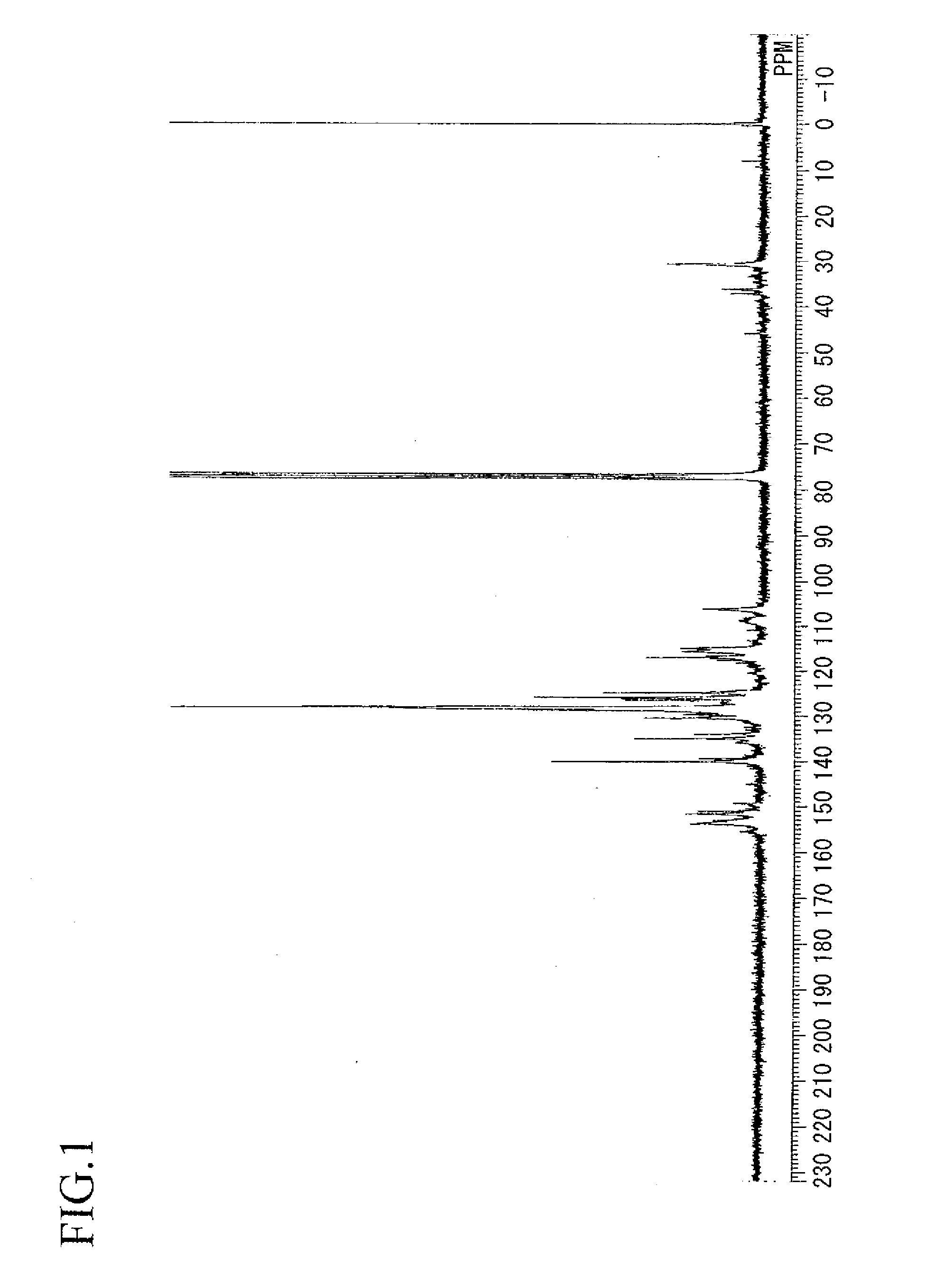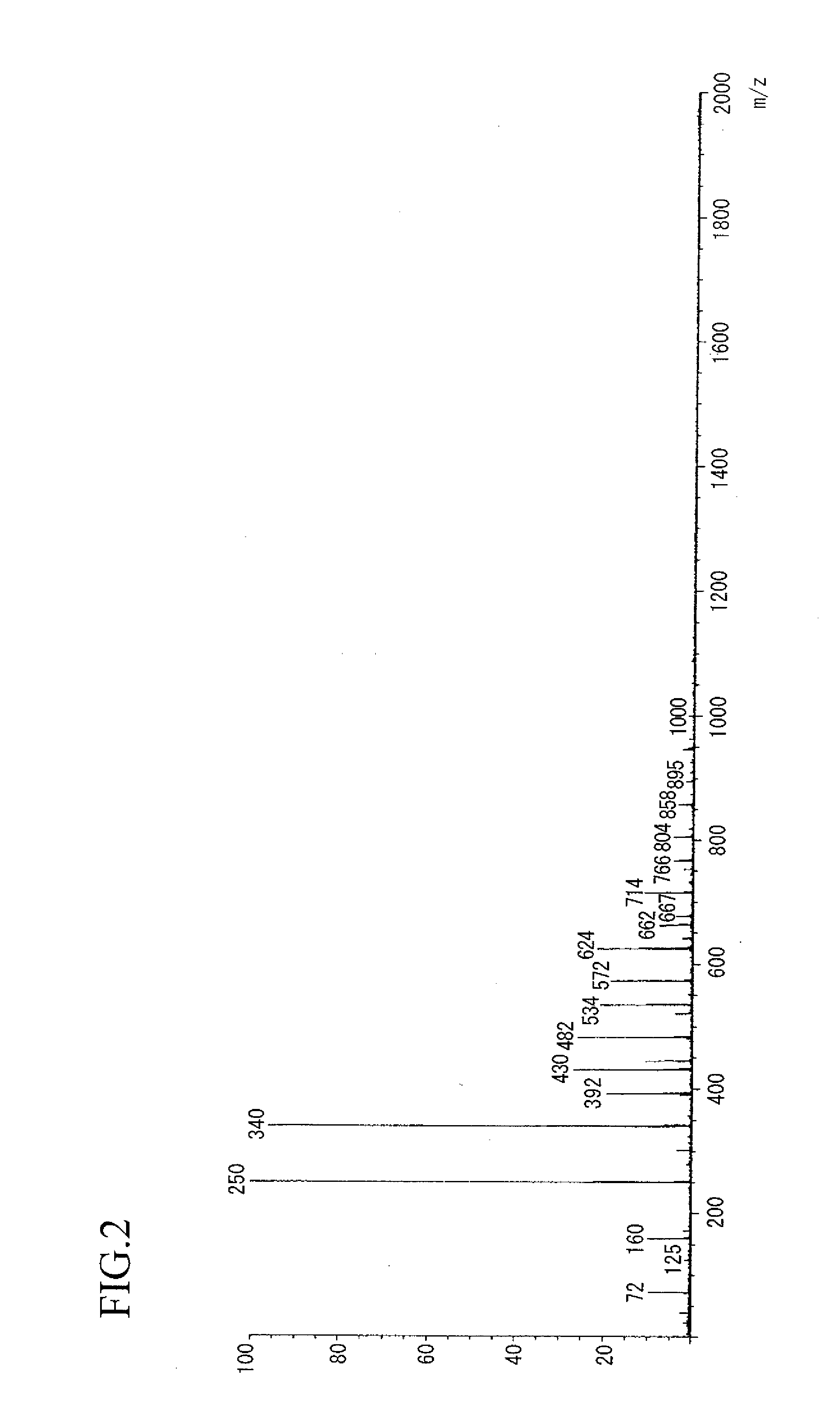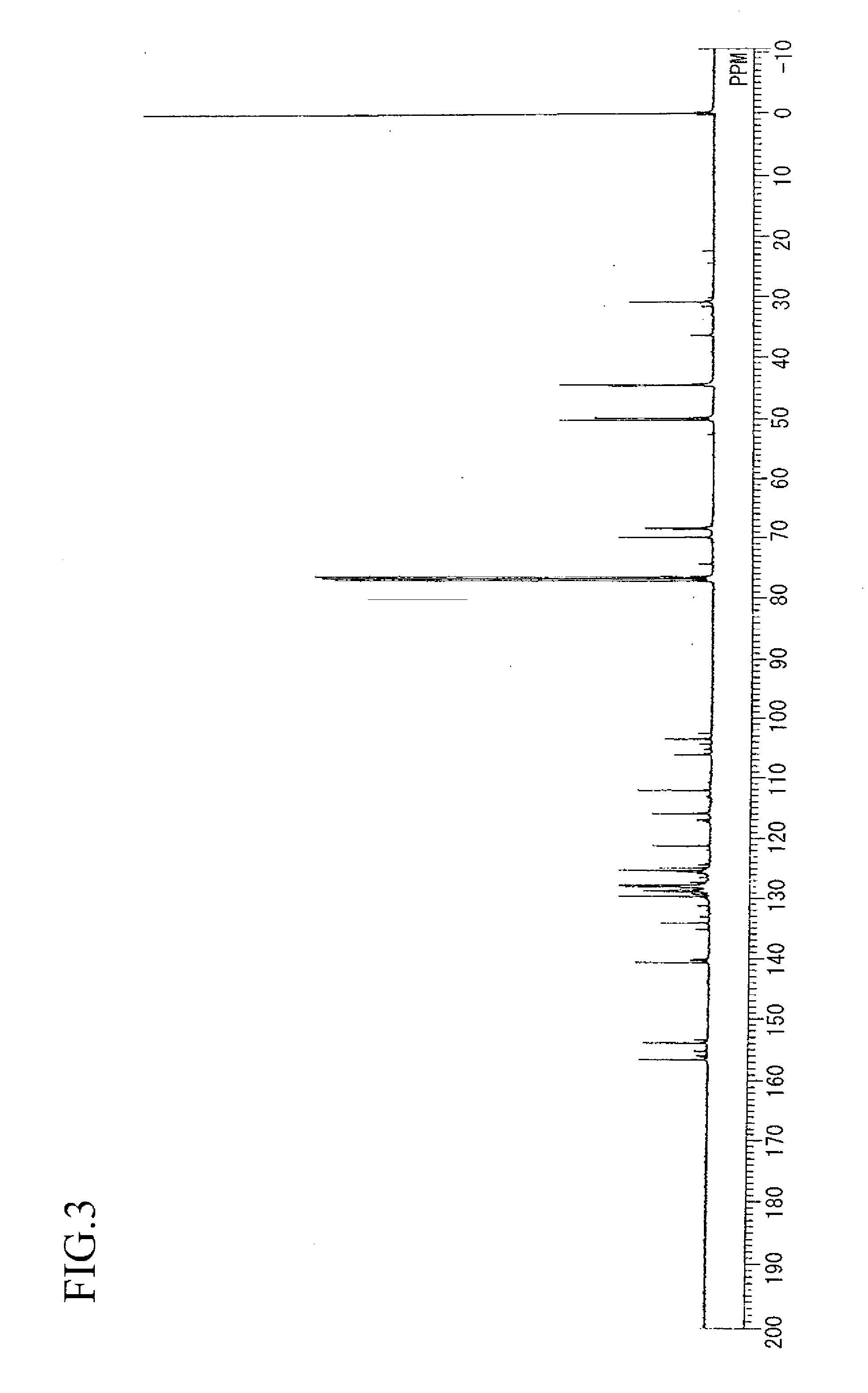Epoxy resin composition and cured article thereof, novel epoxy resin and production method thereof, and novel phenol resin
a technology of epoxy resin and composition, applied in the direction of semiconductor devices, solid-state devices, semiconductor/solid-state device details, etc., can solve the problems of never being obtained epoxy resin, cannot be constructed, etc., and achieve excellent flame retardancy and dielectric characteristics
- Summary
- Abstract
- Description
- Claims
- Application Information
AI Technical Summary
Benefits of technology
Problems solved by technology
Method used
Image
Examples
example 1
Synthesis of aralkyl group-containing dihydroxy(polyoxynaphthylene)
[0144]In a flask equipped with a thermometer, a dropping funnel, a condenser tube, a distilling tube and a stirrer, 160 g (1.0 mols) of 2,7-dihydroxynaphthalene represented by the following formula:
and 108 g (1.0 mols) of benzyl alcohol were charged, followed by stirring at room temperature while bubbling nitrogen. 2.7 g of paratoluenesulfonic acid monohydrate was added. After heating to 150° C. in an oil bath while paying attention to heat generation, water produced was extracted using a distilling tube and the reaction was conducted for additional 5 hours. After the completion of the reaction, 1,000 g of methyl isobutyl ketone were added and, after dissolving, the reaction solution was transferred to a separatory funnel. After washing with water until rinse water shows neutrality, the solvent was removed from the organic layer with heating under reduced pressure to obtain 240 g an aralkyl group-containing dihydroxy...
example 2
Synthesis of aralkyl-modified poly(oxynaphthalene) type epoxy resin
[0148]In a flask equipped with a thermometer, a dropping funnel, a condenser tube and a stirrer, 160 g of the compound (1) obtained in Example 1, 463 g (5.0 mols) of eplchlorohydrin, 139 g of n-butanol and 2 g of tetraethylbenzylammonium chloride were charged and dissolved while purging with a nitrogen gas. After heating to 65° C., the pressure was reduced to the pressure at which an azeotrope is produced, and then 90 g (1.1 mols) of an aqueous 49% sodium hydroxide solution was added dropwise over 5 hours. Under the same conditions, stirring was continued for 0.5 hours. The distillate produced by azeotropy during stirring was separated by a Dean-Stark trap and the aqueous layer was removed, and then the reaction was conducted while returning the oil layer into the reaction system. Then, the unreacted epichlorohydrin was distilled off by distillation under reduced pressure. The resulting crude epoxy resin was dissolve...
example 3
Synthesis of aralkyl group-containing dihydroxy(polyoxynaphthylene)
[0149]In the same manner as in Example 1, except that 108 g of benzyl alcohol was replaced by 216 g (2.0 mols) in Example 1, 330 g of an aralkyl group-containing dihydroxy(polyoxynaphthylene) (hereinafter, this is abbreviated to “compound (2)”) was obtained. The resulting compound (2) was a brown solid and had a hydroxyl group equivalent of 180 g / eq, a softening point of 67° C. and a melt viscosity at 150° C. of 0,5 dPa·s.
PUM
| Property | Measurement | Unit |
|---|---|---|
| Temperature | aaaaa | aaaaa |
| Percent by mass | aaaaa | aaaaa |
| Mass per equivalent | aaaaa | aaaaa |
Abstract
Description
Claims
Application Information
 Login to View More
Login to View More - R&D
- Intellectual Property
- Life Sciences
- Materials
- Tech Scout
- Unparalleled Data Quality
- Higher Quality Content
- 60% Fewer Hallucinations
Browse by: Latest US Patents, China's latest patents, Technical Efficacy Thesaurus, Application Domain, Technology Topic, Popular Technical Reports.
© 2025 PatSnap. All rights reserved.Legal|Privacy policy|Modern Slavery Act Transparency Statement|Sitemap|About US| Contact US: help@patsnap.com



